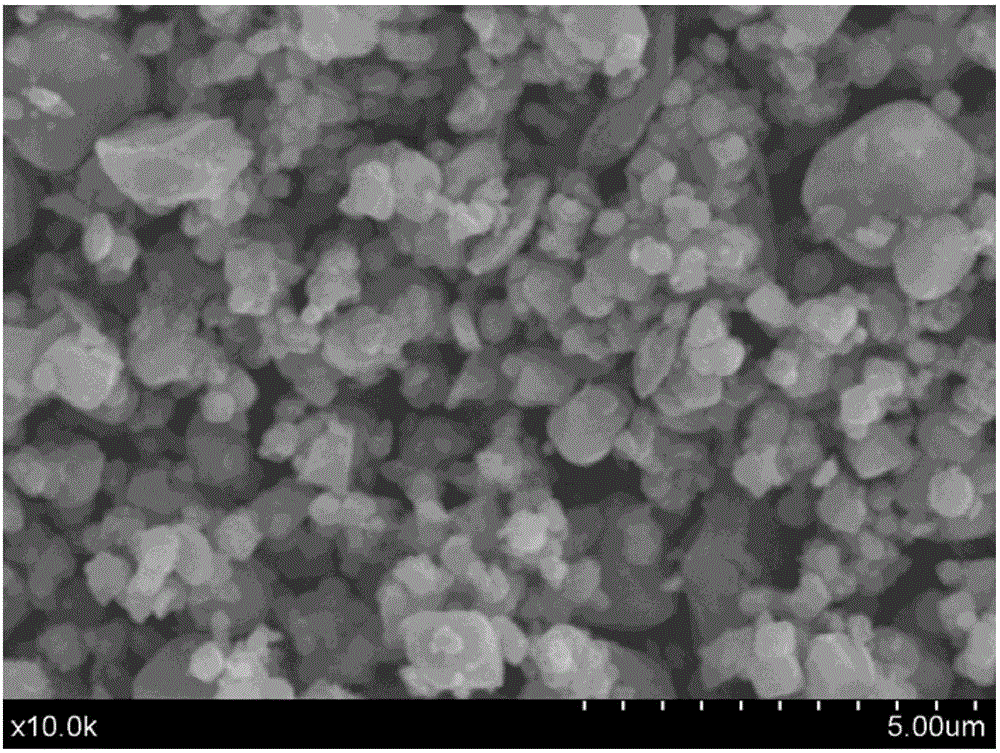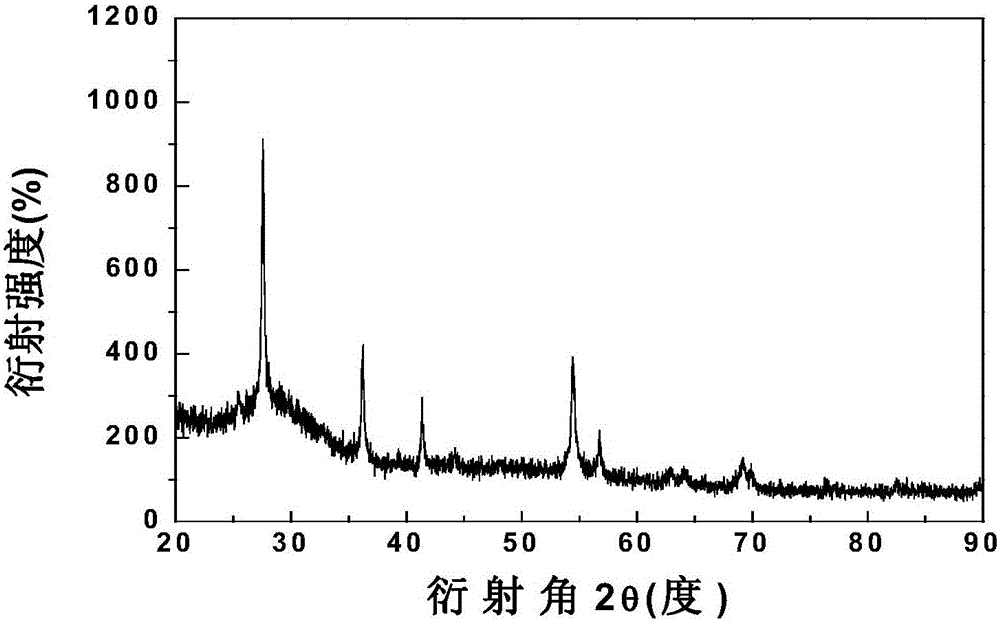Bismuth oxide-based white pigment for digital glass ink-jet printing and preparation method of pigment
A digital inkjet, bismuth oxide technology, applied in applications, household appliances, inks, etc., can solve problems such as restricting product development, and achieve the effect of strong market adaptability, good controllability, and uniform particle size distribution
- Summary
- Abstract
- Description
- Claims
- Application Information
AI Technical Summary
Problems solved by technology
Method used
Image
Examples
Embodiment 1
[0029] A kind of bismuth oxide-based white pigment for glass digital inkjet printing, the preparation method of which is as follows:
[0030] First of all, for a 500ml ball mill jar, it is suitable to grind 25g of white pigment at a time, according to bismuth oxide (α-type Bi 2 o 3 ) 35.4%, amorphous silicon oxide (SiO 2 ) 14.4%, boron oxide (B 2 o 3 )6.4%, lithium oxide (Li 2 O) 4%, alumina (Al 2 o 3 )2.6%, zirconia (ZrO 2 )1.2%, R-type titanium oxide (TiO 2 ) 36% mass percentage, calculate the mass of each raw material needed for ball milling 25g white pigment, bismuth oxide (α-type Bi 2 o 3 ) 8.85 g, amorphous silicon oxide (SiO 2 ) 3.6 grams, boron oxide (B 2 o 3 ) 1.6 g, lithium oxide (Li 2 O) 1 g, aluminum oxide (Al 2 o 3 ) 0.65 g, zirconia (ZrO 2 )0.3 g, R-type titanium oxide (TiO 2 ) 9 grams, and then weighed according to the calculation result;
[0031] Secondly, the weighed bismuth oxide (α-type Bi 2 o 3 ), amorphous silicon oxide (SiO 2 ), boron...
Embodiment 2
[0037] The experimental method of this embodiment is similar to that of the first embodiment, except that the mass percentages of the raw materials are different. According to bismuth oxide (α-type Bi 2 o 3 ) 30.4%, amorphous silicon oxide (SiO 2 ) 12.4%, boron oxide (B 2 o 3 )4.4%, lithium oxide (Li 2 O) 3%, alumina (Al 2 o 3 ) 2.1%, zirconia (ZrO 2 )1%, R-type titanium oxide (TiO 2 ) 46.7% mass percentage, calculate the mass of each raw material required for ball milling 25g white pigment, bismuth oxide (α-type Bi 2 o 3 ) 7.6 g, amorphous silicon oxide (SiO 2 ) 3.1 g, boron oxide (B 2 o 3 ) 1.1 g, lithium oxide (Li 2 O) 0.75 g, aluminum oxide (Al 2 o 3 ) 0.53 g, zirconia (ZrO 2 )0.25 g, R-type titanium oxide (TiO 2 ) 11.67 grams, then weighed according to the calculated results, and then weighed according to the calculated results, the following steps are completely consistent with Example 1.
[0038] The white pigment that present embodiment obtains, and ...
Embodiment 3
[0040] The experimental method of this embodiment is similar to that of the first embodiment, except that the mass percentages of the raw materials are different. According to bismuth oxide (α-type Bi 2 o 3 ) 40.4%, amorphous silicon oxide (SiO 2 ) 16.4%, boron oxide (B 2 o 3 )8.4%, lithium oxide (Li 2 O) 5%, alumina (Al 2 o 3 )3.1%, zirconia (ZrO 2 )1.4%, R-type titanium oxide (TiO 2 ) 25.3% mass percentage, calculate the mass of each raw material needed for ball milling 25g white pigment, bismuth oxide (α-type Bi 2 o 3 ) 10.1 g, amorphous silicon oxide (SiO 2 ) 4.1 g, boron oxide (B 2 o 3 ) 2.1 g, lithium oxide (Li 2 O) 1.25 grams, aluminum oxide (Al 2 o 3 ) 0.77 g, zirconia (ZrO 2 )0.35 g, R-type titanium oxide (TiO 2 ) 6.33 grams, then weighed according to the calculated results, and then weighed according to the calculated results, the following steps are completely consistent with Example 1.
[0041] The white pigment that present embodiment obtains, an...
PUM
| Property | Measurement | Unit |
|---|---|---|
| Particle size | aaaaa | aaaaa |
Abstract
Description
Claims
Application Information
 Login to View More
Login to View More - R&D Engineer
- R&D Manager
- IP Professional
- Industry Leading Data Capabilities
- Powerful AI technology
- Patent DNA Extraction
Browse by: Latest US Patents, China's latest patents, Technical Efficacy Thesaurus, Application Domain, Technology Topic, Popular Technical Reports.
© 2024 PatSnap. All rights reserved.Legal|Privacy policy|Modern Slavery Act Transparency Statement|Sitemap|About US| Contact US: help@patsnap.com










